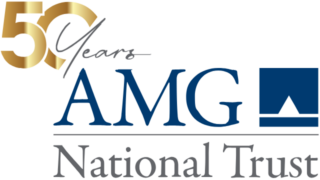Rising Interest Rates Would Tarnish Large-cap Stocks the Most
• 3 min read

Get the Latest Research & Insights
Sign up to receive an email summary of new articles posted to AMG Research & Insights.

Equity markets this year are expected to generate total returns in the mid-to-upper single digits with the primary driver being profit growth, but there are significant differences across asset classes, according to the Base Case scenario in AMG’s new Economic Outlook (2022-2024).
The lowest returns will likely come from U.S. large-cap stocks, while small- and mid-caps along with foreign equities are expected to bring higher returns.
While the potential rewards for equity investors are attractive this year, the markets are eyeballing the Federal Reserve (Fed) and its efforts to keep the economic recovery stoked while dousing persistent inflation.
On the rewards front, U.S. large-cap stocks, most often reflected by the S&P 500 index, are relatively expensive. Most of the gains in this asset class are likely to be driven by earnings growth, instead of rising valuations, as the economy continues to grow. In U.S. mid- and small-caps, AMG expects faster earnings growth from stocks that are somewhat cheaper than large-caps.
Foreign stocks might also offer investors somewhat higher returns than the S&P 500. They are not expensive, and profits are expected to grow at pace with the S&P 500 this year. Foreign stocks have underperformed the S&P 500 in the past, but a large portion of this relative underperformance has come from the S&P’s valuation rising faster than profits. The relationship between foreign stock valuations and profits has stayed tighter and thus presents a stronger relative opportunity.
The largest known risks to equity markets remain interest-rate increases and a balance sheet runoff (the opposite of quantitative easing, QE, called quantitative tightening, QT) by the Fed. Since the Great Recession in 2009, the Fed has backstopped financial asset prices, including stocks, with lower interest rates and QE. AMG expects the Fed to begin normalizing monetary policy by slowly raising interest rates and engaging in QT this year.
Recent years have provided an exceptional example of what rate cuts and QE can do to stock prices—S&P 500 total returns doubled the value of $1 invested over the three-year period ending Dec. 31, 2021. Earnings growth accounts for nearly 40% of this gain, dividends a small amount, and the remaining 50-60% from ever-higher valuations. AMG anticipates increased market volatility this year as the Fed moves to normalize monetary policy but also sees overly aggressive Fed actions as the biggest risk to an otherwise decent year for earnings growth.
This information is for general information use only. It is not tailored to any specific situation, is not intended to be investment, tax, financial, legal, or other advice and should not be relied on as such. AMG’s opinions are subject to change without notice, and this report may not be updated to reflect changes in opinion. Forecasts, estimates, and certain other information contained herein are based on proprietary research and should not be considered investment advice or a recommendation to buy, sell or hold any particular security, strategy, or investment product.
Get the latest in Research & Insights
Sign up to receive a weekly email summary of new articles posted to AMG Research & Insights.



